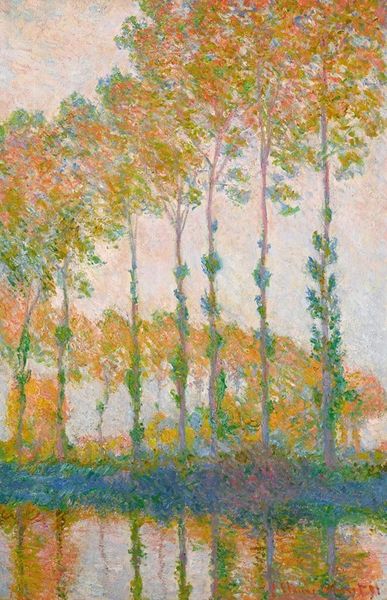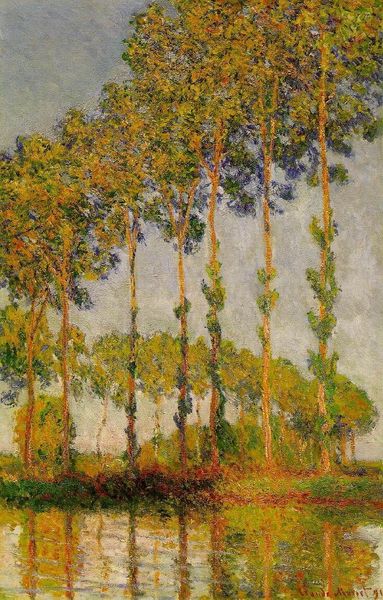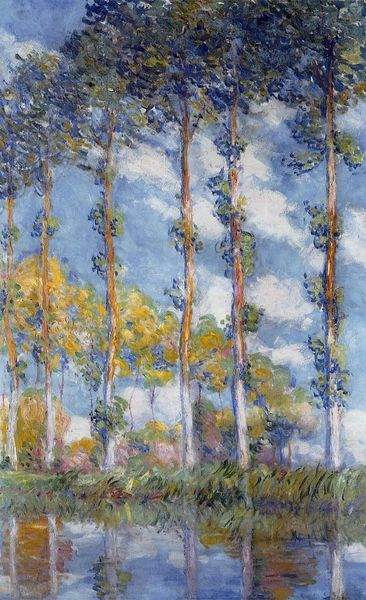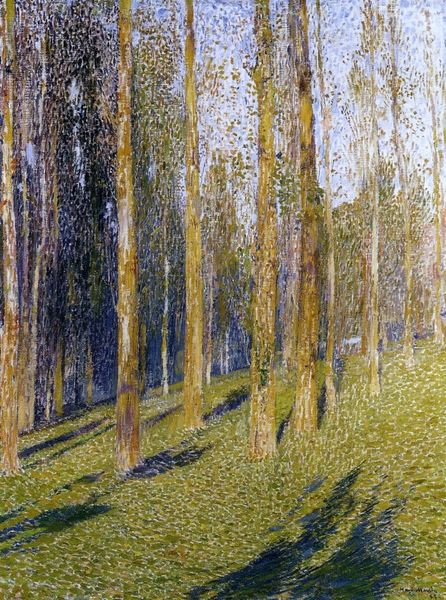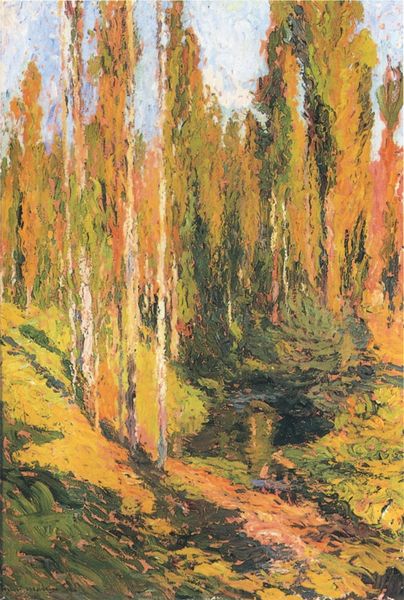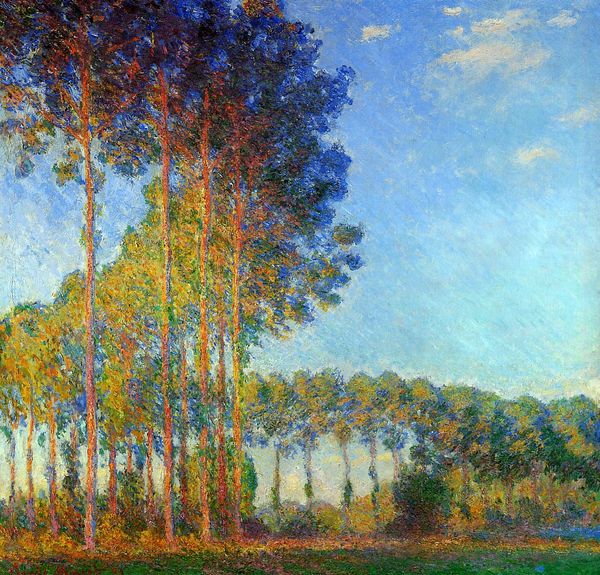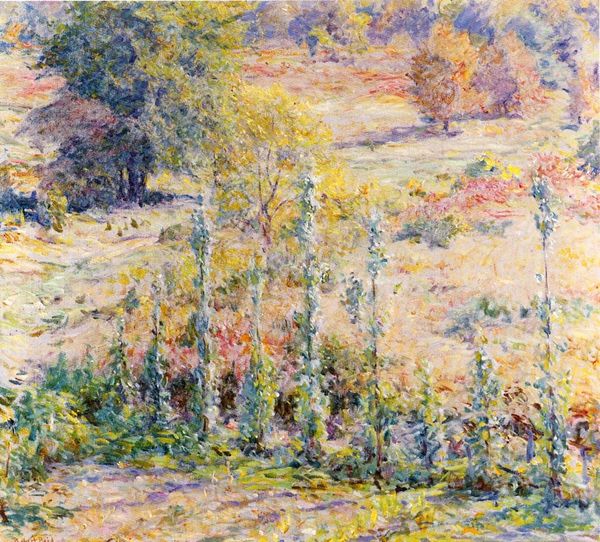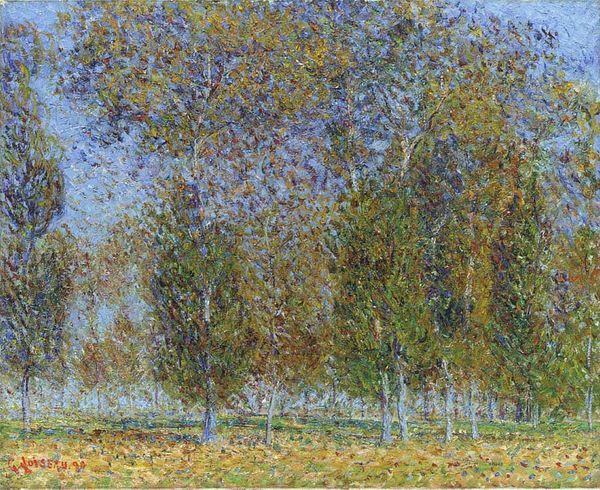
Dimensions: 65 x 100 cm
Copyright: Public domain
Editor: So this is Claude Monet’s "Poplars on the Banks of the Epte," painted in 1891. It's an oil painting showing, well, poplars reflected in water. The light is incredible. It feels both serene and a little unsettling, almost like a dream. What catches your eye in this piece? Curator: The verticality is striking, isn't it? The poplars reach towards the sky like supplicants, yet their reflections tether them to the earth, to the subconscious. This duality speaks volumes. Monet, consciously or not, is tapping into a very old symbol – the tree as axis mundi, the world axis connecting the heavens and the underworld. Editor: So you're saying the trees represent more than just...trees? Curator: Precisely! Consider the shimmering water. Water is a potent symbol of the unconscious, of emotions, of the hidden. Monet isn't simply painting a landscape; he's exploring the reflected self. Note how the colors become more intense, almost distorted in the water. This is not mere representation. This is Monet diving deep into the well of the soul, acknowledging its depths. Editor: That's fascinating. I always just saw it as a pretty landscape. Now, knowing about those layers of symbolism, it feels like a much richer, almost spiritual experience. Curator: Indeed. It's a reminder that art, at its finest, is a dialogue between the visible and the invisible, the conscious and the unconscious. We bring our own experiences, memories, and cultural understanding, when we view art. That combination enriches what we see and why. Editor: I definitely won’t look at Impressionism the same way again. There's so much more depth to these images than I initially realized.
Comments
No comments
Be the first to comment and join the conversation on the ultimate creative platform.
